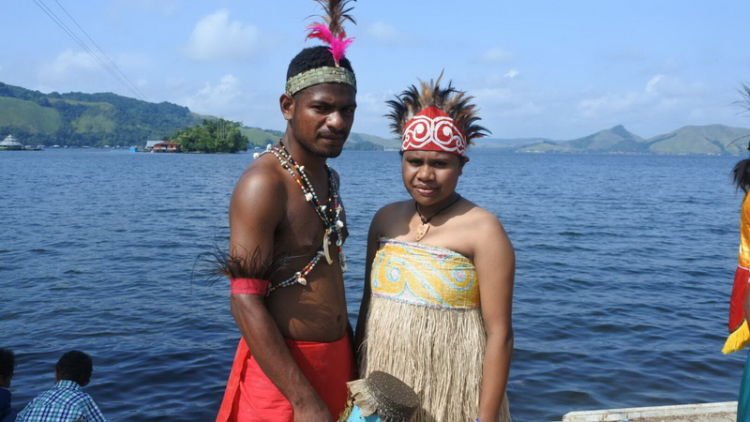PAPUAAROUND – The Biak tribe is one of hundreds of indigenous peoples with a total of 29 regencies or cities in Papua. Quoting from the Antara News website, the Biak people living in various parts of the world still uphold the wedding tradition and its culture and customs.
The reason is, this tradition is passed down from their ancestors when they wanted to marry the Papuan bride. So what is the wedding tradition of the Biak Tribe in Papua?
1. Propose Before Marriage
Similar to other local regulations, the Biak Tribe has a proposal process before marriage. But what does it matter?
The difference is that there are two types of proposals in the Biak Tribe wedding procession. The first procession, which is the sanapen. Sanapen is a procession used by the Biak Tribe who often match their children when they are underage.
The second procession, which is the fakfuken. Fakfuken is a procession of applications addressed to the female family. Her child must meet a child on the part of the male family after the age of 15.
When he is over 15 years old, the male family will bring an introductory sign called kaken. A kaken is a bracelet or necklace made of beads.
The number of kaken handed over depends on the economic ability of the male family. Later, the female family will also give kaken as a sign of accepting the proposal from the male family. Then, the two parties will determine the dowry that the male party will give to the female party.
2. Ushering in Dowry (Ararem)
In addition, the male and female parties will carry out a procession of handing over dowry or ararem traditions that have been passed down for generations. This tradition remains despite the advancement of modern technology.
Quoted from the Jubi page, the ararem tradition is something very sacred. This is because it must be given to a woman’s family who will one day hold the status of a wife in a keret or clan family.
Meanwhile, the custom of paying a dowry to a female family is a symbol of the honor and dignity of the groom’s family. The purpose of this procession is that the groom can bring his wife to live in a household to carry on the inheritance for a certain family clan.
3. Wedding Preparation
According to Mahligai’s website, the wedding preparation process begins with a meal together. A meal together will be followed by all the brothers on the bride and groom’s mother’s side.
The next day, the bride will be dressed up and escorted to the groom’s house and to the place where the wedding procession will take place. During the marriage contract, the bride and groom will wear traditional clothes and jewelry typical of the Biak Tribe.
4. Wedding Ceremony
The wedding ceremony begins with the handing over of a number of heirloom objects such as arrows, axes, and spears. This heirloom is passed down from the female family to the male family.
The male family also responded by giving the same as a symbol that the male family would accept the child of the female family and take care of her as its own child.
Then, the wedding procession will be followed by giving a cigarette like a cigar. This cigar must be smoked by every bride and groom. The procession of smoking cigars begins with the groom.
The traditional elders then gave each bride the same amount of cigars. The procession is accompanied by prayers and mantras recited by traditional elders.
The prayer offered is generally to expect blessings from the Almighty and for the bride and groom to always be happy on their household ark. After the prayer, the bride and groom will feed each other’s sweet potatoes. The biak tribe’s wedding ended with a meal with the extended family.
That is the tradition of the Biak Tribe wedding. It’s unique, huh, man?
Source : goodnewsfromindonesia
Related News : 5 Endemic Fauna of Lorentz Papua National Park

